National parks are areas of global importance for the nature of the Earth and humanity. In national parks, priority is given to nature and the local people who have lived together for centuries. That’s why rules and laws protect plants, animals, water, natural resources, etc., and international treaties adopted by Bulgaria protect us all from the destructive appetites of a few.
You should not be startled by prohibitions on the territory of the national park such as: do not deviate from the marked routes, do not pitch tents by the lakes and rivers, although these are the most beautiful places in the world, do not tear plants, do not destroy the anthills, don’t make noise, don’t bathe in the lakes, don’t bring pet dogs with you, don’t light fires, don’t enter the biosphere reserves without a permit, don’t follow the buggie, cross-bike and sled craze through the winter.
Nature is a legacy bequeathed by our ancestors and borrowed from our children!
Have you thought about how old our planet Earth is – five billion years. Against this background, human life is insignificantly short. But today man turns out to be a sufficiently destructive individual, more powerful even than the meteorite that 65 million years ago brought the end of the dinosaurs. The natural cataclysm we cause ourselves is the boomerang that will hit our children. How? By cutting down the forests, concreting the land, turning the rivers, seas and oceans into unimaginable plastic landfills, with the predatory attitude towards natural resources, with greed and a modern way of life, with the development of tourism without a global and local strategy and plan. Biodiversity, which consists of all types of microorganisms, plants and animals, their genetic pool and ecosystems, has been mapped.
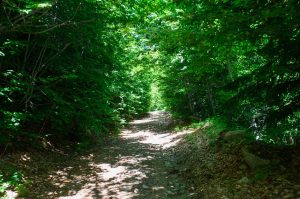
Accepting that nature belongs to everyone, regardless of state borders, in the 1970s a process of cooperation between countries began to increase human and financial resources for its conservation. The first international rules and norms are established.
The first international treaty for ecological protection of the Earth dates from 1972. after a UN session on environmental issues in Stockholm. This is how the foundation of the strategy of the ecological movement is laid: “Think globally, act locally”. In the same year, the Convention on World Cultural and Natural Heritage was signed.
At the Earth Summit in 1992 in Rio de Janeiro, the convention on biological diversity was signed. It adopts the concept of creating a system of protected areas and restoration of disturbed ecosystems, as well as plans, strategies, laws and management for the protection of endangered species and populations. With the help of an international scientific community, under the auspices of the United Nations, a global strategy is being built to protect biodiversity, the goal of which is the sustainable use of natural resources in a way that ensures the normal existence of all species and the functioning of ecosystems.
Pirin National Park received its status in 1998. It is included in the United Nations List of National Parks and equivalent reserves and is subject to the Convention on World Cultural and Natural Heritage.
Why visit Pirin National Park?
The Pirin National Park is a place to meet nature, health therapies, educational and scientific activities, sports and tourism. Its territory is 4,400 ha, covering the entire Northern Pirin. The beloved mountain is characterized by a deeply incised alpine relief. 81 of the peaks are above 2500m above sea level. The highest is Vihren /2915m/. in the granite part of the mountain there are over 180 high mountain lakes. Many rivers originate from here, which in some places form beautiful waterfalls. The amazing thing is that there are more than 70 warm mineral springs scattered at the foot of the mountain. Dozens of sinkholes, chasms and caves are formed at the bottom of the cirques in the karst part of the mountain.
The Pirin flora counts 2000 species. The mountain is one of the main shape-forming foci of the Bulgarian flora. Evidence of the very old origin are the relict species: the edible chestnut / near Brežani in South Pirin/, the white and black mulberry, the squat. 114 species of endemics /plants that are not found elsewhere in the world/ have been identified. The Vihren section is the largest form-forming focus of young endemic forms. The Baiovi dupki reserve is remarkable for the dignified age of its trees and for the variety of coniferous species: black and white mulberry, black and white pine, spruce, fir, squat, as well as beech.
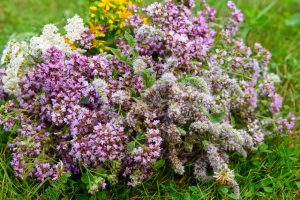
The total number of vertebrate animal species is 171. Of them, 4 are fish, 10 are amphibians, 14 are reptiles, 101 are birds, and 42 are mammals.
With this priceless asset, Pirin National Park is widely preferred for:
- hobby tourism – observation of butterflies, birds, animals, flowers, etc.
- for art classes;
- for climate therapy;
- for healthy sports;
Interesting ideas for activities in nature
- The captivating beauty, delicacy, vulnerability and freedom of butterflies make them the object of unceasing attention. The butterfly is a symbol of the ancient Greek goddess Psyche, the protector of the human soul, which is so vulnerable, as is the lightest touch of the butterfly’s wings. Over 440 species of butterflies are known in Europe. In Bulgaria, this wealth includes more than 120 species. Studying butterflies can be a very enjoyable activity. There are some subtleties to the observation, but the results are obtained only with a lot of patience and persistence. Butterflies love sunlit meadows, flowers with sweet nectar, riverside grasses and flowers. In the morning, as their wings warm up, they are lazier and easier to observe. Different types of butterflies have their own preferred plants. Therefore, their observation is also related to knowledge of botany. Photographing the butterflies allows for a more detailed examination and determination of their species. Butterfly identification books have been published in Bulgaria, and a visit to the Natural History Museum in Sofia, known for its large butterfly collection, would be very useful.
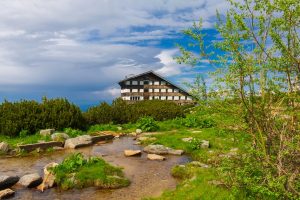
- Observation and study of plants in the National Park. The lush multi-colored spring change of the mountains provides enough material to create colorful collections. Nature is the most virtuoso artist worth following. After mid-June, we recommend the trails to Popovo lake from Bezbog hut, to Muratovo lake from Vihren hut and to the Vasilash Lakes from Demyanitsa hut.
- Collection of medicinal plants. If in the past knowledge of herbs was passed down naturally from elders to children, today, due to the fact that 73% of Bulgaria’s population lives in cities, this is more difficult to do. Picking herbs is a useful and exciting activity, but it requires preliminary preparation, suitable picking tools, storage containers. There are some general rules such as: picking in dry and sunny weather, in ecologically clean places, collecting in woven baskets, sorting the different types of plants in separate places, picking only the useful part of the plant. The roots are collected in autumn and after rain, the leaves – in late spring and summer. Flowers and inflorescences are harvested during initial to full flowering, and seeds and fruits when fully ripe. The most popular herbs for tea that can be picked at the foot of the mountain and in the sunny meadows along the road to Gotse Delchev and Mocharata hut are: thyme, St. John’s wort, oregano, mint, plantain leaves, gentian.
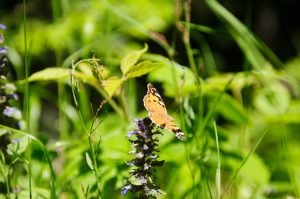
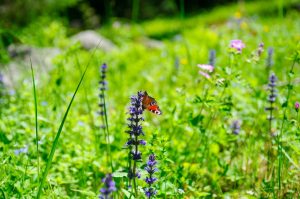
- Bird serenades at sunrise. An impressive route with a perfect musical arrangement is the one from Bezbog hut to Popovo Lake at the end of June, when the day is longest and summer conquers the heart of Pirin. On June 22 – the summer solstice, you can watch the sunrise on Popovo Lake / at 5:45 a.m. morning/- a deeply revered and sacred moment for the ancient Thracians. A Thracian sanctuary was discovered near the shores of the lake, and in the memories of the old Dobrinishte people it is noted that until the 20s of the last century Vlach shepherds visited Popovo Lake for ritual purposes.
- Birds in the silence of the night. If you turn off the television in your hotel room, remove the headphones from your ears and open the window, you will surely hear the owls that live with people under the roofs of the houses and in the buildings. Among these mysterious friends are also the little owl, the owl, the cuckoo and the wood owl. In children’s fairy tales, the owl has the role of a forest sage, not by chance. The symbolic association of the owl with knowledge and wisdom comes from antiquity. On the other hand, the terrifying darkness burdens the owls with ominous secrets, which gives rise to unjustified superstitions and even killing of these very interesting birds.
- Raise your eyes to the blue sky. In the high parts of Pirin, among the rocky crags, one of the rarest birds in Bulgaria can be found – the golden eagle. It is included in the Red Book of Bulgaria. The rock eagle is a symbol of Pirin National Park. Its habitats are known on Jamdjievi rocks in the direction of Mount Vihren, on the steep niches of the Guards, etc. places. The golden eagle has impressive dimensions: body length up to 83 cm. and wingspan up to 225cm. The buzzard and the peregrine falcon can be found in the lower parts of the mountain and sub-mountain meadows and fields. In Pirin National Park, a special center has been built to restore the population of the griffon vulture. It is located in the village of Rakitna on the southern side of Pirin. Today, the population of this bird has stabilized, with large flocks of circling vultures often seen over the Kresnen gorge.

- The topic of why to visit Pirin National Park is vast, just as the topic of the nature of the mountain is vast. Nature can give meaning to any journey, bring emotional delight and physical strengthening. As guests of the Ruskovets SPA complex, you have an exceptional opportunity to meet her directly.

